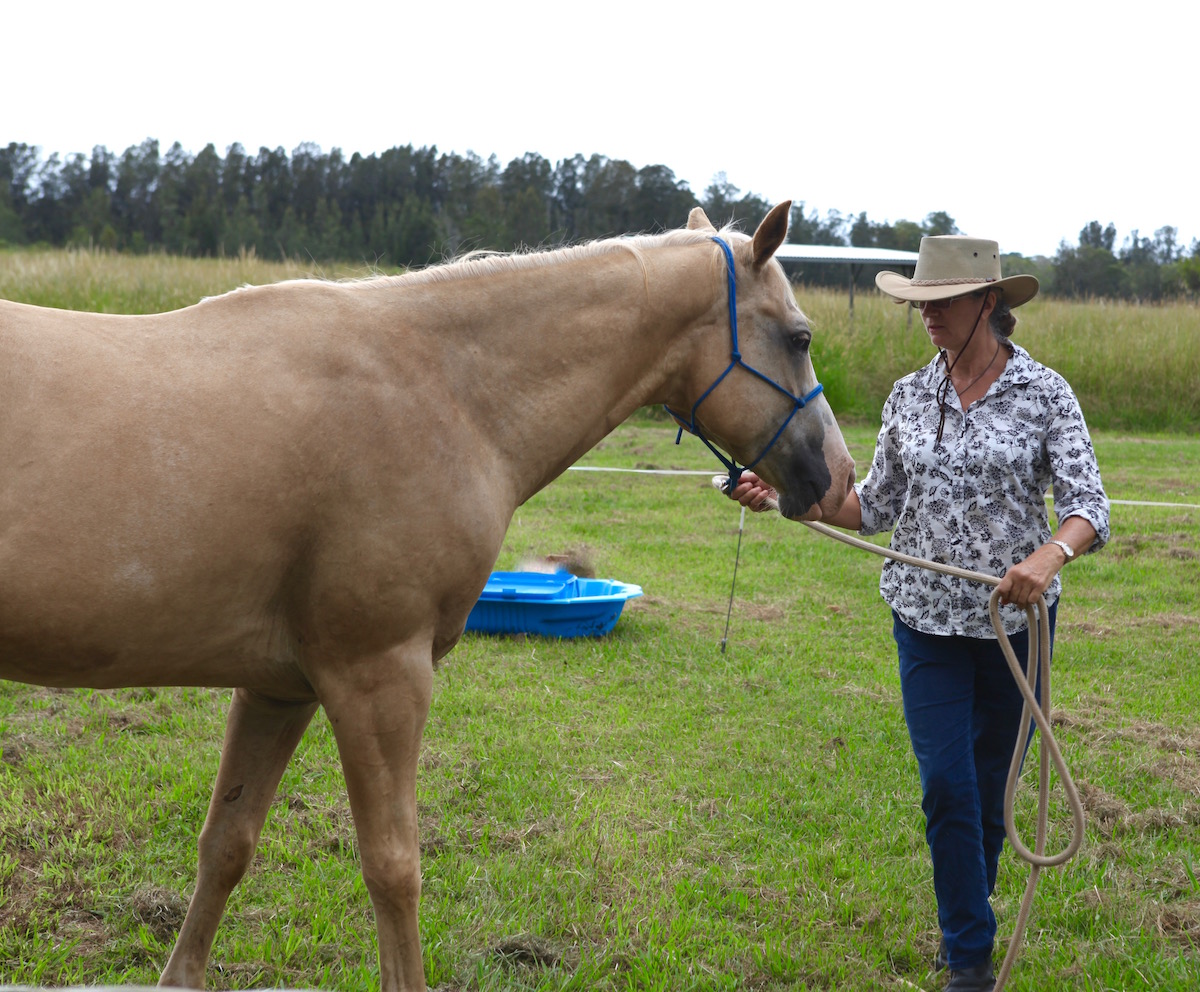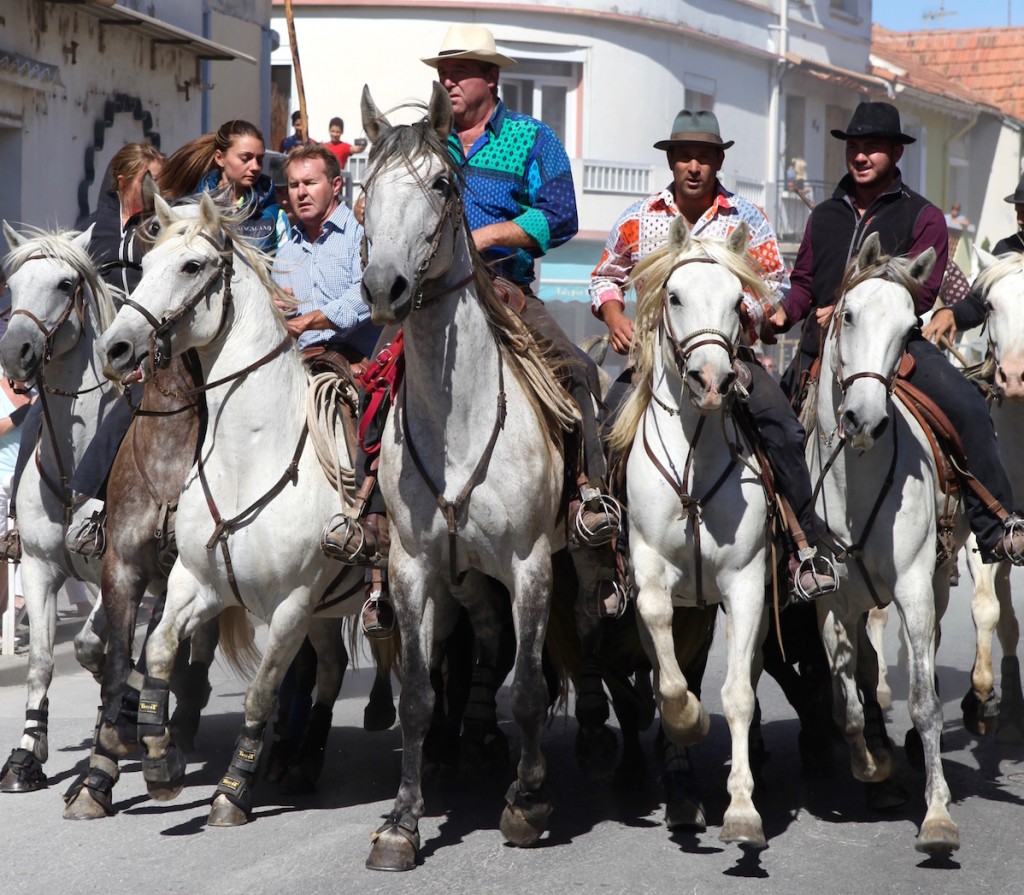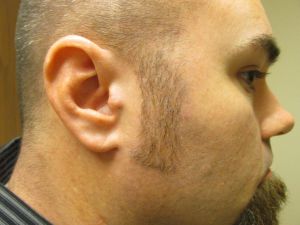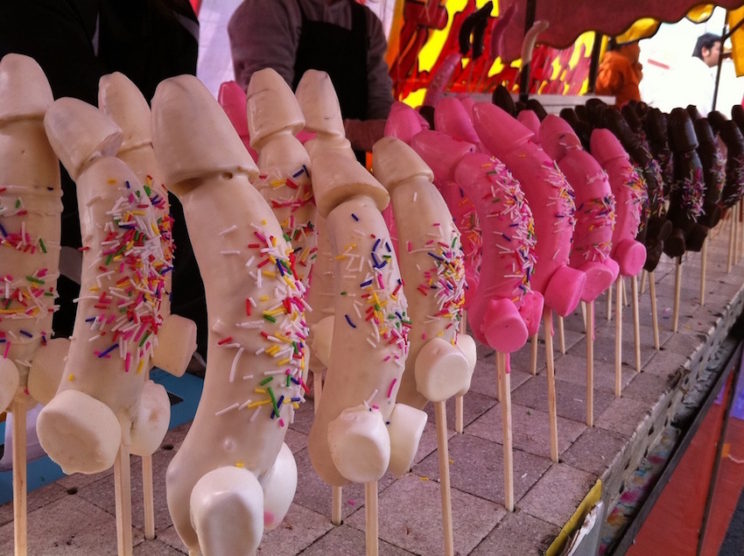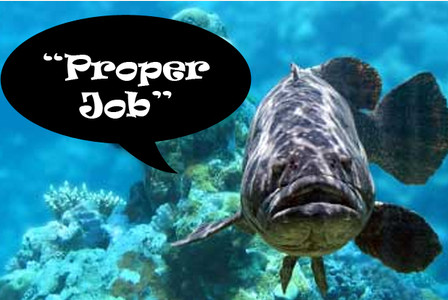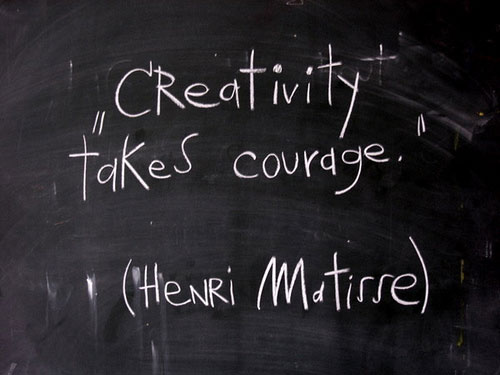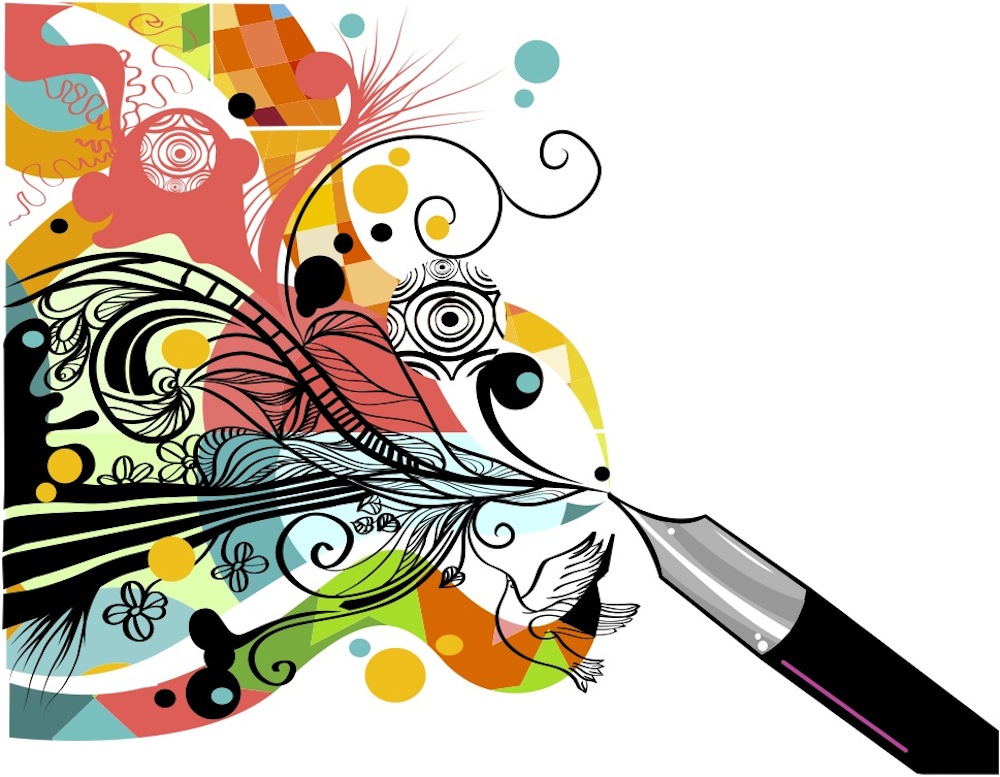The post Equine Facilitated Magic appeared first on .
]]>I was only five years old when I first noticed that horses made me happy. My best friend, Sally, a couple of years older than me, had a perfect first pony, a grey Welsh Cob called Lucy, as safe, sound and sane as they come, and Sally was kind enough to let me spend hours with them both, grooming, or walking beside them, or even riding, or doubling together.
Looking back through the mists of time, there’s something that stands out about those early memories – and that’s the fact that the absolute best times we shared were not necessarily the riding ones. The times spent talking down by the river while Lucy munched contentedly beside us; the times when we would tuck Lucy up in her stable, out of the bad weather, and just hang in there with her, plaiting her mane or simply sometimes just leaning against her, inhaling her warm horsey smell. All three of us just about as content as it’s possible for children and pony to be.
Fast forward almost sixty years and 12,000 miles away from the country of my birth, and here I am, with a group of like-minded women having just taken part in an Equine Facilitated Learning Level 1 course – in order to become practitioners of this groundwork based course, in which there are three participants – the client, the horse and the facilitator.
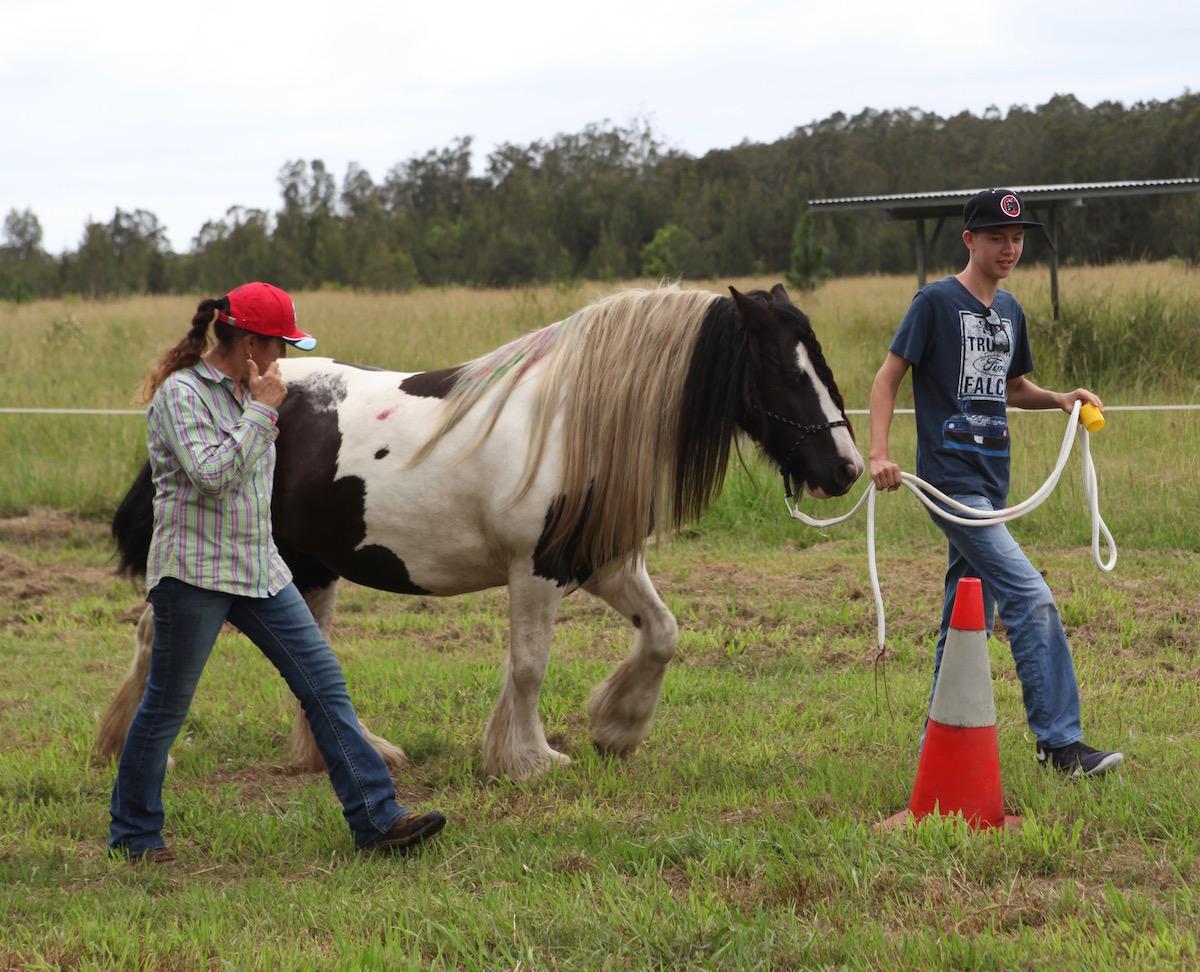
The client – 16-year-old Winter, the horse, Gypsy Cob Sweetcheeks and facilitator-in-training Sue Whatley.
After many years of horse rescue and rehabilitation, natural horsemanship and the teaching of my own methods to children, friends, family and volunteer helpers, I’m not new to the world of equine therapeutic modalities, but I decided to do this course for a specific reason – I wanted to have a qualification which will allow me to do something I’m passionate about – to set up horse groundwork sessions for our Save a Horse Australia rescue horses and for those who might benefit from time spent hanging out with horses, in which ‘magic’ is the key ingredient.
It was an intense four days! The clinic was conducted by Elaine Hughes, the guardian of EFL in Australia. Originally from the UK, but now based in Victoria, Elaine has had many decades of horse experience, and has studied with many of the ‘natural’ trainers, but it was a meeting with Frank Levinson, the founder of EFL, that prompted her interest in the program. When she and her family of four and two-legged friends moved to Australia, Elaine partnered with Sally Francis to create AEFL. Elaine teaches the clinic with her two off-siders, Louise, otherwise known as Irish, and her partner Dave.
What I witnessed as we moved through the four days into a deeper understanding of the horse and human bond, culminating in working with ‘real’ clients on the last day is that EFL seems to substantially deepen people’s understanding of their personal issues and feelings, and that some level of fundamental relaxation occurs.
But the careful – almost invisible – guidance of the facilitator also allows children and adults to experience, as Elaine says: “a huge surge in self-esteem and confidence when they realise they can create boundaries and direct a pony or horse to move in a particular way.”
Children who have stopped speaking; people with anxiety and depression; children and adults with physical or intellectual(or both) disabilities; people who are simply afraid of horses and want to learn not to be – all of these scenarios (and more) were presented to us over the four days, either in theory or practice with role play, or clients. It was an incredibly fulfilling experience for all of us to take our already existing horsemanship skills and our rapid immersion into EFL and to witness the ways in which we could help both ourselves, the client and the horse develop what I can only describe as an elasticity of brain and body. We learnt quickly to allow the space for the session to evolve into whatever is most fulfilling for the client and the horse!
The next step in becoming an EFL practitioner for us all is ten hours of sessions with clients, so watch this space!
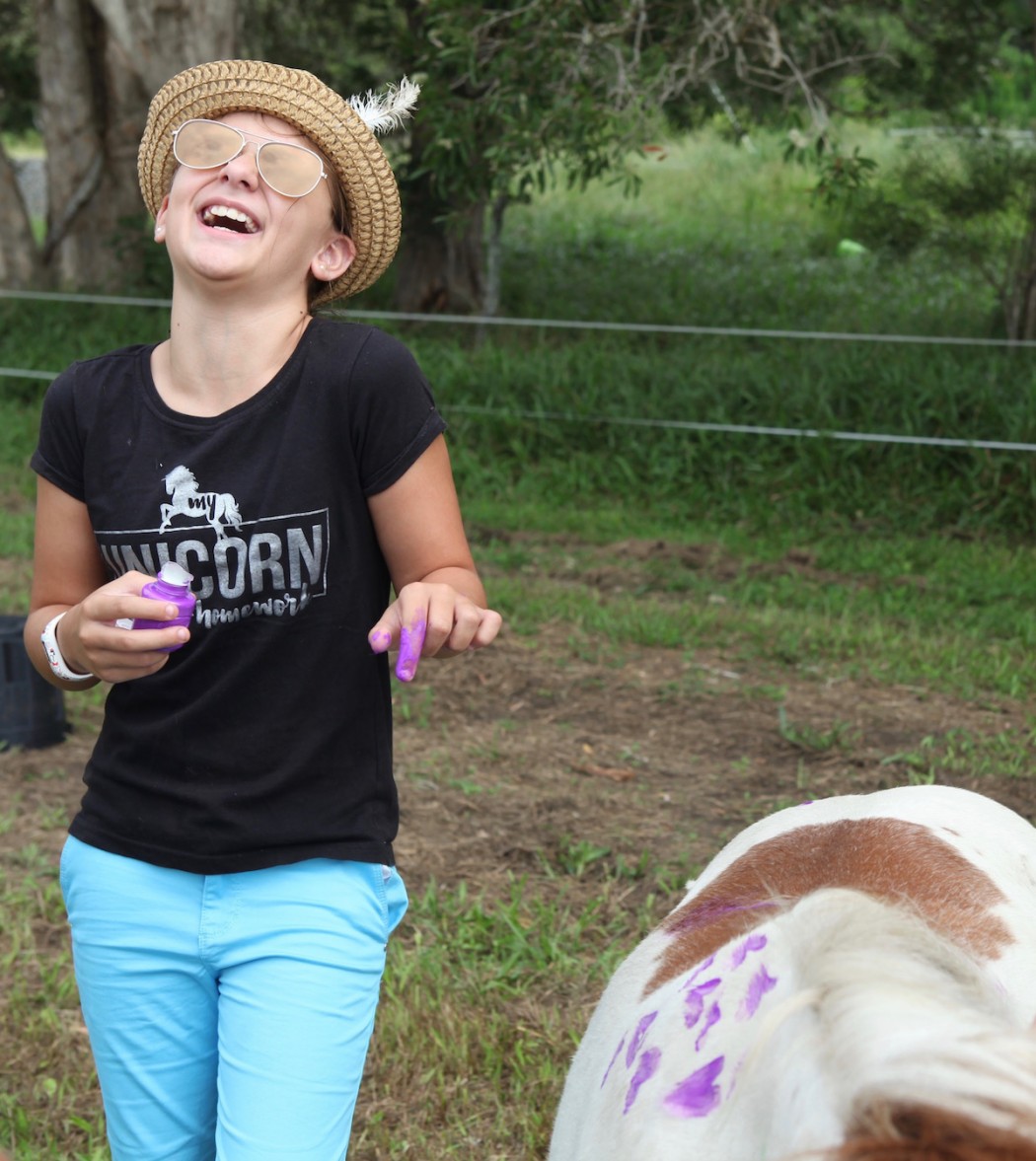
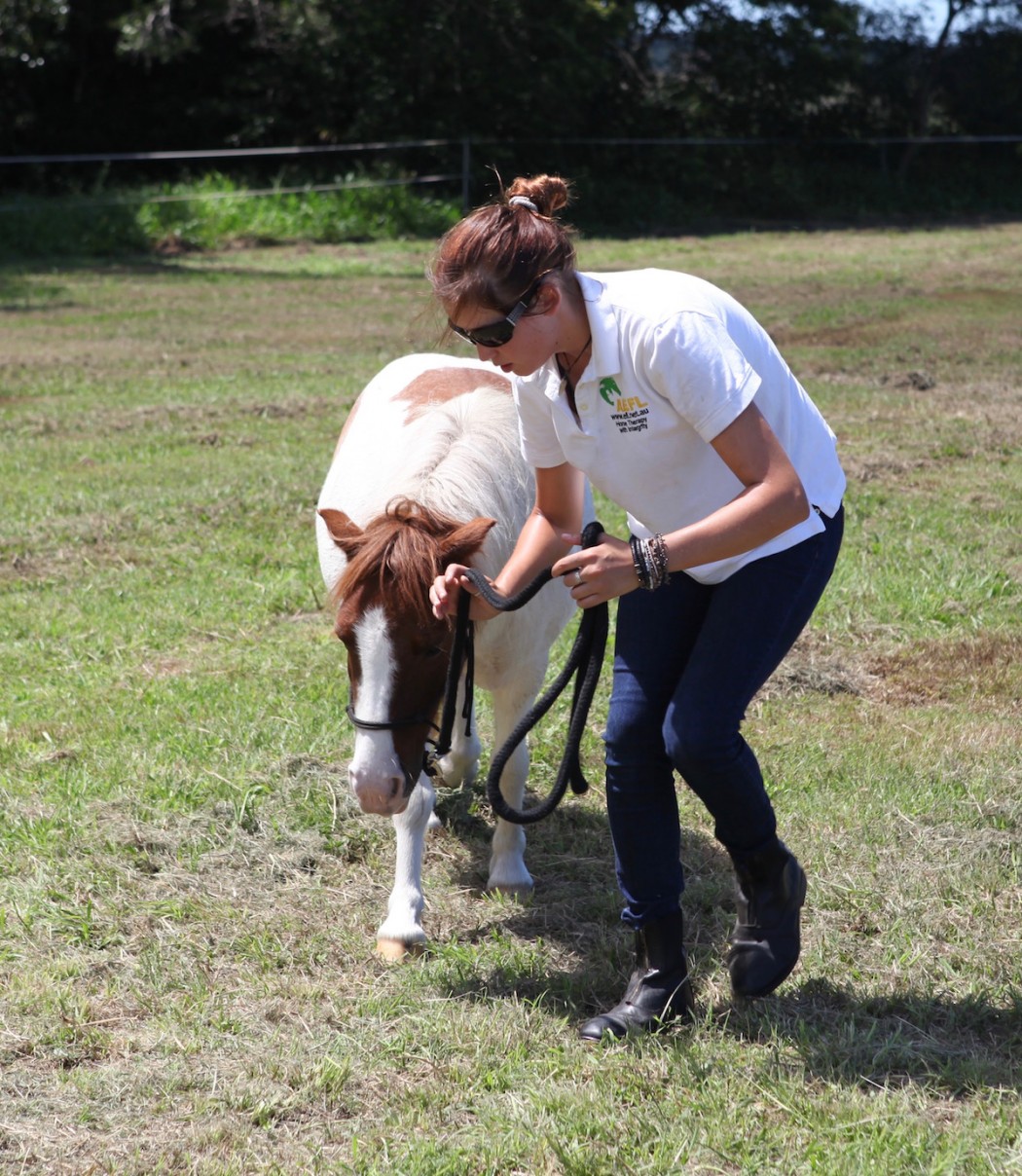
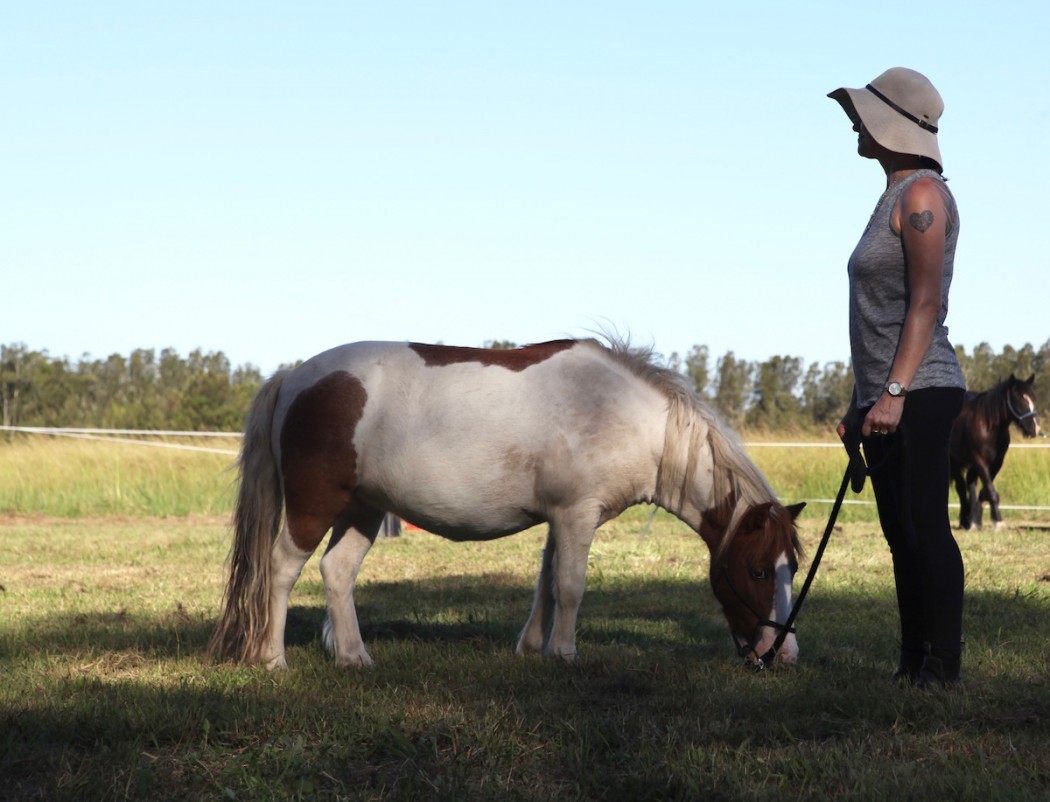
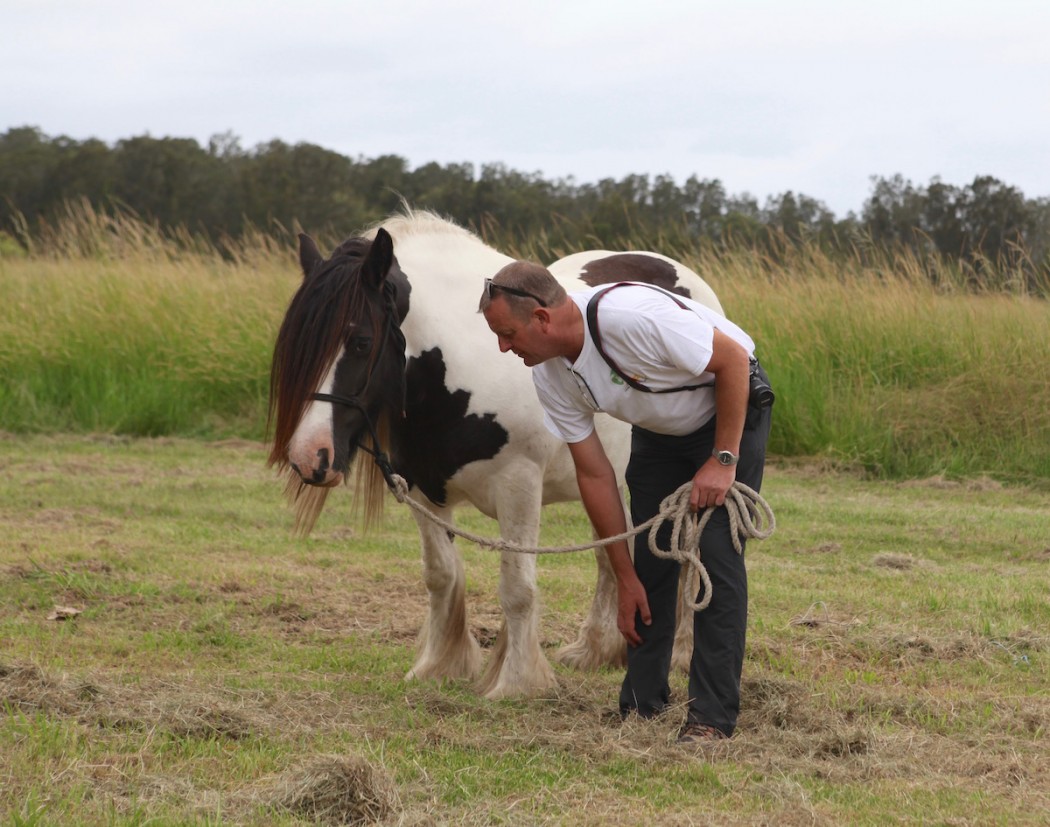
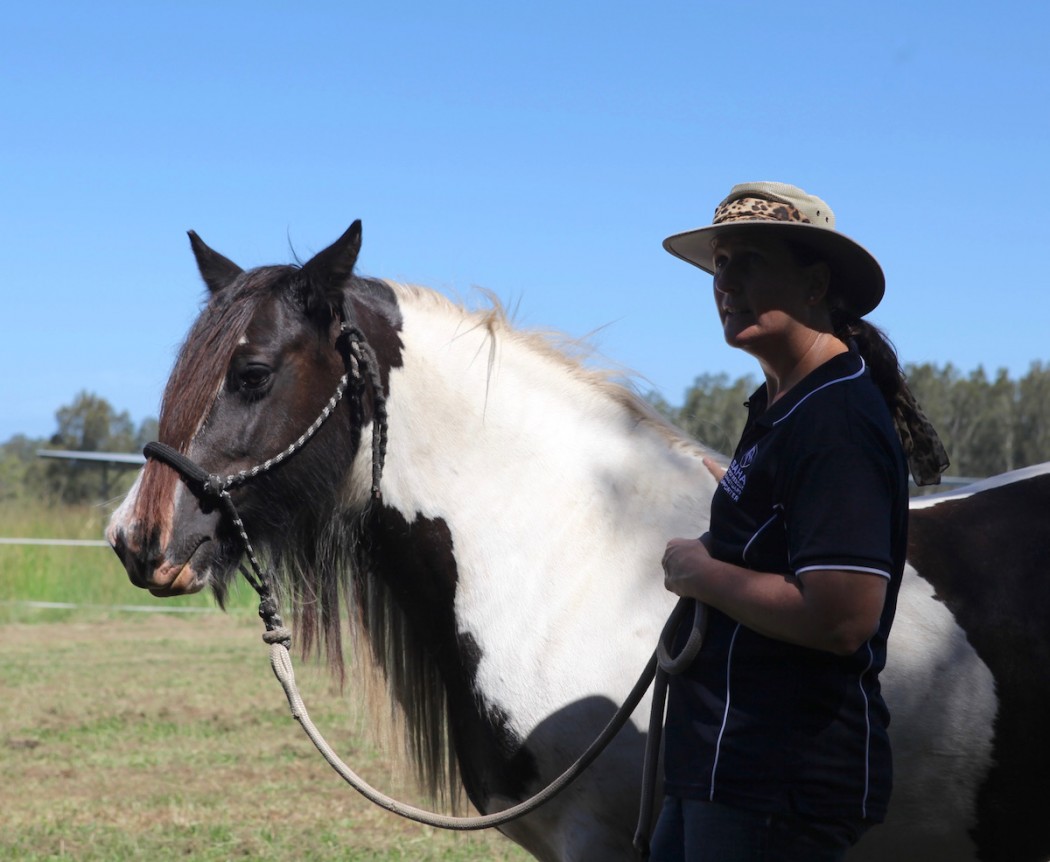
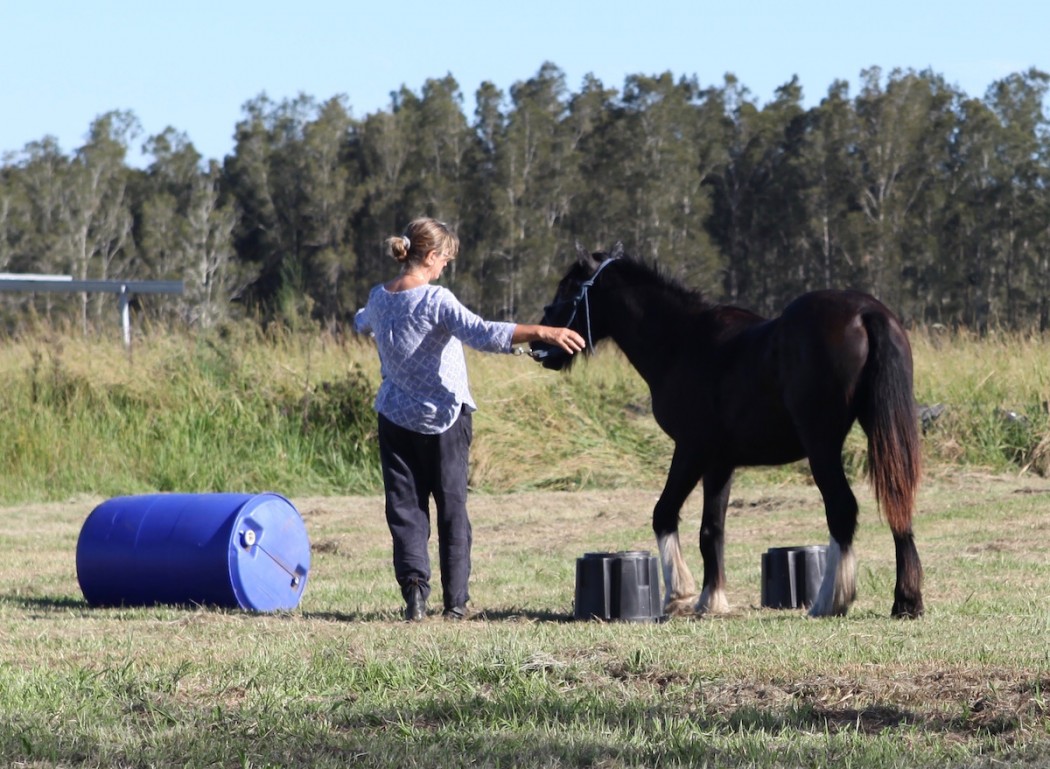
Captions: Sometimes it’s fun to just ‘paint a pony’. Irish aka Louise, gets down to Nina’s level. Magnolia hanging out with Nina. Dave shares a moment with Sweet Cheeks, Cathy Binz my fellow SAHA trainee facilitator. The little yearling Maddie and I enjoy some bonding time.
For more information on EFL go to: https://www.efl.net.au/
AEFL is the Platinum Training Provider for IICT – International Institute for Complimentary Therapies.
Candida Baker is President of Save a Horse Australia and editor of HubVibes. This column first appeared in the March edition of HubVibes
The post Equine Facilitated Magic appeared first on .
]]>The post Sue Spence’s Horses Healing Humans goes international appeared first on .
]]>It’s not difficult to imagine Sue Spence as a child – she’s talking to me about her childhood in the south island of New Zealand, growing up as the horse-obsessed child of non-horsey parents, and the lengths she would go to go riding. “It really didn’t matter whether it was sleeting, snowing or blowing a gale,” she recalls, “I would get on my pushbike and cycle off to my horse in all weathers. It was the only thing that made me truly happy, and for many years I competed as a show jumper.”
But then trouble reared its head in the form of an unexpected illness. “I’d moved from New Zealand to Australia,” she says, “to Queensland, and I was leading a pretty busy life. I have ADHD, and so for me it was nothing to teach six aerobic classes and then go home and go for a ride, but really I was running on adrenalin. I was the kind of rider that they describe as having a ‘hot’ seat – I could make even a quiet horse jump for the moon!’
But although she felt as if she was coping, in fact 15 years ago her life was rocked to its foundations after she was diagnosed with early breast cancer, and it was recommended that she undergo a double mastectomy and reconstruction. “After 30 years of living life at blistering speed – running fitness centres and show jumping, I realised I had to do things differently,” she says. “I moved to a quiet place in the country, and I began to my training in horse whispering, which meant I needed to use a calmer energy.”
Not that it went so well in the beginning. “The first time I tried to get my horse to walk quietly beside me, I was so pent up with anxiety from the cancer and running my gyms, that I was just like ‘go…go…go!” she laughs. Suffering from acute anxiety after the breast cancer, she had to learn to become calm and still. “Nobody had ever taught me that,” she says, “and my ADHD combined with my natural tendency towards fitness just meant I had no idea how to drop into a still, quiet place.”
Sue’s obvious sense of humour shines through as she tells the story of her immersion into the skills of natural horsemanship. “One of my most amazing mentors has been Ken Faulkner,” she says. “I did a clinic with Ken, and I remember I was having a little trouble getting my horse to do something I wanted him to do, and he said, ‘the problem is you have a lot going on inside.’ I was so annoyed. “What do you mean?” I shouted at him, “I’m perfectly relaxed!!” But of course, I was nowhere near relaxed and he spotted it immediately. It was a life-changing moment and it took a horseman to bring me out of my anxiety,” she says, still – I have to say with what you might call a fanatical show jumper’s slight tone of disbelief.
But after learning the tools of the trade, and discovering what a massive difference it had made to her, Sue’s evangelism for a cause kicked in. Her training as a personal trainer and lifecoach became invaluable when she began to run groundwork workshops for women with issues around boundaries and self-esteem. Some women would break down doing her simple ground exercises, because they had never realised how their body language undermined their verbal language.
The whole point being of course, that natural horsemanship, in whatever manner it is taught, is a physical language that allows the human to become a horse ‘leader’, in a non-threatening, strong way, where the verbal and physical language they use is congruent.
But for anyone who has ever thought that you needed a ton of space, horses and equipment to create what has now become an international program with licenses provided to approved practitioners in three states of Australia, you can think again! Her business, Horses Helping Humans™, and her registered charity, the Horse Whispering Youth Program, started out with exactly the same horses she has all these years later – two Shetlands, Mindy who is 28 and Yogi, her 17-year-old son, Larry a 11-year-old rescue mini-pony who lost an eye and Sue’s beloved 28-year-old Quarter Horse,
“People think that when they come to my place they’re going to see something grand, and they get here, and I still have my little motley mob on less than an acre,” she laughs. “But as the program progressed and we began to work with the Department of Youth Services in Queensland, we were able to apply for funding, so now I have a little grandstand, a shade sail over the roundyard and an outside toilet,” she says proudly.
(At the time as building up a business, there was also the family to consider, and if you happen to be a Bacholerette follower you may have noticed Sue’s name used in a completely different context – as the mother of Gold Coast entertainer Apollo Jackson, who was recently a hot contender on the show, and has inherited not just his mother’s energy levels, but also her love of horses.)
For those who might assume that at some point along the way strategies, business-plans and trademarks would have been part of her thinking, she’s still in awe at how the growth of the program has pretty much taken care of itself.
“I can’t even begin to tell you how much serendipity is a part of what I do,” she says. “It’s as if the universe wants HHH out there. Just for one example – when I ran a corporate workshop in Rockhampton one of the practitioners was a business man who told me I needed to go home and protect my IP. I didn’t even know what was! Then later on he asked me again if I’d done it and when I said no, he basically told me I had to do it. I was terrified because I didn’t understand it at all, but then I said to him, well, can I set the license up the same way they did with Les Mills Body Pump licenses, because I can do that – and so that’s what happened. Everyone is trained to a certain level, it’s easy to run and it’s all been based on the Les Mills model because I was a fitness instructor!”
In Rockhampton more synchronicity took place when the local Heritage foundation stepped into support the program. “The people who wanted to start it had no space, and no horses,” she says cheerfully, “so that was going to make it a little difficult, but the Heritage park offered their heritage horses and use of the park and so we were able to set it up.”
In New Zealand it was a magistrate that decided the country needed the program for repeat offenders, and that is exactly what it is being used for. “In Victoria, on the Mornington Peninsular, the license has been brought by a very high-level Parelli practitioner who has an indoor arena, an outdoor arena and a huge American-style barn,” she says, “so really you can see it’s just spreading its wings in whatever way it can.”
The license fee includes all training manuals, the training of a facilitator, public relations, visits from Sue to various local businesses to promote the program and connection to youth service and other government agencies. “What we do is that the facility that is going to run it is fully operational with clients booked from day one,” she says, “people are 100% set up to run it by the time it opens with full backing from their community.”
One of the reasons why the program is so popular with the Department of Youth Services is that they can measure its success. “The essential point of the program – no matter who else it is used for, is that it’s aimed at disadvantaged and at risk youth,” Sue explains. “After thousands of teenagers have gone through this program, they are able to track the success of it by the number of teenagers who have gone on to university, or improved their performance at school, or stayed in school when they were in danger of dropping out – that’s why we have such a good reputation, and why it was so important to make the licenses are done properly.”
Horses Helping Humans also has a connection with Griffith University whereby interns do up to 50 hours volunteering as part of their degrees. “For us to have volunteers who are studying psychology, criminology or business is priceless,” says Sue.
All the students the program works with are referred by youth and family services, school chaplains or counsellors, mental health organisations, child protection, homeless youth and the Justice Department.
It perhaps wasn’t surprising – or only surprising to Sue at any rate – that a publisher became interested in her story. “When they first rang me they left a voice message,” she says, “and I was so busy that I hadn’t even got around to to calling them back, but a friend who’s involved in writing heard the message and said to me, ‘Sue, Pan Macmillan are one of the biggest publishers in Australia, call them back NOW!’”
She did, and a contract followed – but for Sue whose ADHD does not allow her to sit still for long, writing the book was just too hard. “I can’t write a shopping list without getting bored,” she says. “I had no hope with the book.”
Enter serendipity again. “I was at the hairdressers and I was talking about my problems with the book,” she says, “and this woman popped her out from a dryer a few chairs down, and said, ‘Sue Spence! Is that you?’” It turned out to be an old friend of mine who was now working as a transcriber – and she offered to come and transcribe my words for me, so I could walk up and down as much as I liked while I dictated my words, and she would write them up. I think we did the book in record time!”
The book gained Sue Australia-wide publicity that brought in new supporters, and even more ideas for how the program can expand into the future. In the meantime the first Horses Helping Humans conference is taking place soon on the Mornington Peninsular, and Sue is in huge demand as a public speaker right around Australia. I wouldn’t be surprised if you could make that right around the world within a few years – a bit of serendipity allowing!
This story first appeared in the December issue of HubVibes – to subscribe to the free monthly magazine go here: equestrianhub.com.au/publishing/
To find out more about Sue Spence and the work she does, go to: Horses Helping Humans . In 2014 Sue Spence received a Women In Business Awards for Community Dedication and in 2016 she was awarded a Business Award for Creating Change.
The post Sue Spence’s Horses Healing Humans goes international appeared first on .
]]>The post The White Horses of the Camargue appeared first on .
]]>When I was a five-year-old, living in London, my father went on holiday to France, and visited the Camargue region.
Knowing already what his horse-mad daughter would want as a present he brought me back a book – Crin Blanc – (English translation: White Mane). It was black and white still shots from the 1953 short movie, which told the story of a young boy who tames a wild white stallion, Crin Blanc, so infuriating the locals that they hunt the pair, until the boy and the horse choose to disappear forever into the sea. The film won numerous awards including the short film Palme d’Or at the Cannes Film Festival.
Along with Black Beauty, My Friend Flicka, Tam the Untamed (any Australian readers remember that now very politically incorrect book?), Champion the Wonder Horse and a bit later The Silver Brumby, Crin Blanc became one of my all-time favourite books. It was in French, but the story was pretty self-evident, and from the time my father gave it to me, I was determined that one day I would go to the Camargue and ride a horse. (In fact as I child I was determined I would go and tame a wild stallion and bring it back to England, but dreams do become more realistic as we get older!)
So there I am – 57 years (yes you read that correctly) later, cantering along on Tato, or actually more like galloping along on Tato, a sturdy 14.3hh perfect representation of his breed, in the company of the manager of the ranch I’ve chosen to ride at. He’s on his part-bred Camargue/Lusitano five-year-old who still thinks every stick is a horse-eating monster, whereas Tato, fortunately has seen it all before. Despite that, though, he’s definitely forward, keen to go, soft-mouthed, and easy to ride.
There’s a minute, as we gallop along the edge of a small river, which has a herd of young horses, foals and mares on one side, and on the opposite side a large herd of the famous Camargue black bulls, where I actually have time to think – “This is the perfect moment.”
I have had, as the French say, ‘la chance’, because the threat of wet weather has kept everybody else away. Thanks to having spent a year working in French stables as a teenager, my ‘horse’ French is up to par enough so that at least Patrick, the manager of La Cabane du Daladel, and I can communicate on all aspects of horse care. Patrick is training his young horse, Crom, for bull-work, one of the main disciplines for the Camargue horses.
It’s a sad fact that there are actually no herds of true wild horses left anymore, but the reasoning behind the decision to allow registered breeders was to stop in-breeding or accidental diluting of the bloodlines.
In 2003, three registration categories were created to identify Camargue horses: one the pure Camarge – horses registered in the stud book, foaled and identified in the Camarge, branded before weaning and from a ‘manade’, a small semi-feral herd of which only 45 exist; the Carmarge hors manade – horses registerd in the stud book, foaled and identified in the Camargue from the select list of private breeders and the Camargue hors bercau – horses registered in the stud book, foaled and identified outside of the Camarge to registered breeders.
Thanks to these measures, the ancient blood-lines of the Camargue horses, considered to be one of the oldest breeds in the world, will be safe forever. For thousands of years these horses have lived in the delta of the River Rhône, a wetland marshy area which these days is a massive national park.
Patrick tells me that the Camargue horses in the main live a: “good life”. Those brought in for regular trail-riding work – which of course if the fate for many of them – are lucky. “They work from April to October,” he says, “and then they go back out into the marshes.”
And when he says marshes, he means marshes. When we are not trotting or cantering along the sandy paths between the lakes and wetlands, we are picking our way through water which varies from a few inches deep to well up to Tato’s stomach, so that we are almost swimming and my feet are somewhere around Tato’s head trying to keep my boots dry!
What is extraordinary to me is that not only do these horses cope with this environment, they positively thrive on it. Thanks to the fact that the water of the Rhône is sweet rather than salty, the somewhat unappetising looking stringy grasses are apparently full of nourishment, and the marshes too are full of herbs and different sorts of grasses. Patrick tells me working horses are fed once or twice a day, but normally just with hay, and are usually let out at night to graze. I have to say I did not see one skinny horse during our four-day visit there.
I don’t know about other ‘ranches’ but at La Cabane du Duladel when a horse reaches retirement age from its work, it’s put out to pasture with the foals and mares, until, as Patrick elegantly puts it, “one day we find him asleep forever”.
So one thing (as a vegetarian) that concerned me of course, is the ‘bull’ work, but in the Camargue, it is literally that, rather than bull-fights. The ‘guardians’ – horse-riders – use their horses to round-up the bulls, but also in fetes and street events throughout the year where the bulls are galloped with through the town, while young men jostle for the privilege of hanging onto a bull’s horns! It sounds highly dangerous, but in fact the street work with the bulls and horses is much safer than the ‘tauromarchie’, or bull-fighting in the arenas where the young men have to remove a string tied around the bull’s horns, and where a fresh bull is brought in every 15 minutes.
The best bulls live to be up to 40 years old, and some are so famous they even have their own statues.
At one point, as we stop and gaze at a herd of cows with their calves, their horns just beginning to take on the beautiful lyre-shaped points they grow as adults, Patrick looks pensive. “I think,” he says, “in the Camargue we love our bulls even more than our horses.”
Watching him sit Crom as he dances his way around the marshes, and how he gently reassures him, I think – or hope – he’s probably teasing me.
The family herds in the Camargue are so important that when we ride into the middle of the massive marshy area where the mares and foals are eating, all Patrick has to do is click his tongue and call and they all make their way towards us, gently saying ‘hello’ to our horses and generally showing the calm temperament that their breed is known for right from the start.
Some researchers believe that the Camargue horses go back as far as the small Paleolithic Solutré horse which was hunted for meat. The horses were appreciated as riding mounts by the Celtic and Roman invaders, and blood lines of the Iberian horse have been found in their DNA. In fact, the original Spanish ‘Jaca’ horse was probably a cross between the Celtic pony and the Camargue. It was later improved by crosses with other horses brought in by the Moors, and because of its cross to the Jaca its DNA found its way into the Americas where breeds such as the Chilean and the Criollo show some of the characteristics common to the Camargue horses.
So what are the characteristics? My little Tato was a brilliant example of a pure Camargue horse – their average heights being from 13.3hh to 15.2hh maximum. He was broad and stocky with a short neck, deep chest, obviously strong legs, and a beautifully full wavy mane and tail that I had plenty of time to gaze at. His ears were small and forward – and as Patrick said, “he loves his work”. His trot was even and flat, and his canter too. With the modern version of a working Camargue saddle on he was so comfortable I could ride all day, and his back end was as well-muscled and round as any Quarter Horse.
Over thousands of years, their hooves have adjusted to the marshy ground, becoming hard and tough with very flat wide soles. Put one of our thoroughbreds in there and I swear they’d have an abscess and thrush in a week or two!
The two hours seemed honestly to pass in ten minutes – we passed swans, and water-birds of all kinds, an otter in the river, and began to make our way peacefully home.
There’s only one problem with ticking something off your bucket list, I thought as I reluctantly dismounted – it means it’s unlikely to happen again – but it’s an experience I’ll certainly never forget. I hope little Tato enjoyed it too, and that he too, when he reaches retirement age will live out his days in his marshy wetland home.
We’d chosen to say in at the Mas du Notaire winery in Gallician, in the heart of the Camargue. The beautiful old farmhouse has several forms of ‘gites’ – accommodation – attached, including access to a kitchen and refectory. We were there on the exact weekend that they were reliving the glory days of summer, and bulls and horses seemed to be everywhere in the town – in fact everywhere we went in the Camargue the white horses seemed determined to find me – we saw them out in the marshes, making their way across roads and rivers, and in every town we drove through.
The towns too, are famous for their beauty – Arles, of course, where Van Gogh lived for a year, and was at his most productive, and a special mention for the amazing cathedral in Saintes Maries de la Mer, dedicated to Saint Sarah, the patron saint of the gypsies. Another non-horsey high-point was definitely the ornithological park only a few kilometres out of Saintes Maries de la Mer, with its flocks of pink flamingos.
The Camargue is truly a magical place – if it isn’t on your travel bucket list, I suggest you add it, you won’t regret it!
A version of this story first appeared in the HubVibes ezine: https://equestrianhub.com.au/publishing/
For trail riding contact: La Cabane du DALADEL
Patrick Fargier
D 58 – 30600 MONTCALM (between Aigues-Mortes and les Saintes Maries de la Mer)
Tel / Fax 04 66 73 52 08 – 06 20 78 03 74
www.chevaux-listel.camargue.fr
For Mas du Notaire go to: https://shop.famillerambier.com/en/lodging/guest-houses-of-the-mas-du-notaire-in-camargue/
For the Ornithological Park go to: https://www.parcornithologique.com/https://www.parcornithologique.com/
The post The White Horses of the Camargue appeared first on .
]]>The post Only THREE places left for the next Creative Courage course appeared first on .
]]>What exactly is creativity? Or, even more importantly – what is our own unique, individual creativity, and how do we tap into it, to find a deeper, more authentic way to live. Creativity helps us see the world in new and different ways – to use an abstract, conceptual way of thinking that helps us bring surprising solutions to our problems.
Writing is one of the most powerful ways to access creativity – of all kinds.
Through writing we can access the deepest desires of our soul and bring them to the light. So bring your Creative Courage to the table, and join us in a six-week feast for the senses!
What previous participants have said:
“Inspirational,” India Morris, Australia
“The entire course was bliss – from the first moment to the last,” Cecilie Brown, Spain
Candida Baker is a writer, publisher, editor and ‘horse listener’, and
the author of numerous fiction, non-fiction and children’s books.
Her latest book is Belinda the Ninja Ballerina.
She holds an MA in Art History from the University of Adelaide.
For more information email Candida on: [email protected]
Or call her on: 0401056894. Websites: www.candidabaker.com
Date: Tuesdays from February 28 – April 11, 2017
Time: 7.30-9.00pm viagra sans ordonnance online Cost: $400
The post Only THREE places left for the next Creative Courage course appeared first on .
]]>The post The ring circle of life appeared first on .
]]>I can still remember when and where I bought my favourite piece of jewellery, a large amethyst and silver ring I’ve worn for almost three decades.
It was a freezing cold winter’s day in Sydney 25 years ago, and I had my then-four-month-old son in a backpack. We were living in a terrace house in Paddington, not far from Oxford Street, and even though the day was bleak, with a howling southerly, I felt the need to escape, and so I’d rugged us both up, him in a padded blue jumpsuit and a bobble hat, so that he looked a cross between a tiny Michelin man and an east-German refugee.
As we walked up to Oxford Street, the shops seemed suddenly to be places of immense cheer. I stopped and looked in all the windows, inhaling the idea that the world at large was still going about its business even if I was exhausted and preoccupied with nappies – and naps.
We passed a smart clothing store, the kind I frequented often before getting pregnant, and even if I too was rugged up in utilitarian jeans and jumper, I thought it would be a nice idea to walk in, to gently wave my hand through rows of dresses, perhaps even to try something on and see if my figure had fully returned.
The pencil-thin shop assistant, black dress, blonde hair, smart shoes, looked me up and down.
“Can I help you,” she said, and not even the slightest smile lit the corners of her mouth.
“That’s ok,” I said breezily, “I’m just browsing – I might try a few things on.”
She nodded slowly as if trying to suggest that she totally disapproved of the idea, whilst not wanting to actually lose a sale.
My son was burbling cheerfully in his backpack, and I put him on the ground so that I could better look at the rows of elegantly unsuitable post-baby clothes while the Pencil looked at him as if he was some alien piece of lifeform.
For some absurd reason I decided to try on some of the soft, figure-hugging dresses, an the Pencil held them at some length from her body, as she carried them into the change room for me, where I discovered that a size 10 wasn’t going to cut it – not even close and asking the Pencil to get a size 12 for me, I caught a sudden look of myself in the full-length mirror.
The maternity bra, the op-shop jeans, the thick winter socks were all off-set beautifully by a pair of men’s underpants, which I’d discovered when I was heavily pregnant were much more comfortable than women’s nether garments.
“I’ve changed my mind,” I called out of the curtain into the brightly lit wood panelled room, and scrambling into my clothes, hefting Sam back onto https://www.viagrasansordonnancefr.com/ my back, I dashed out of that shop like a frightened rabbit. As I walked up the street, I could almost have shed a tear or two – for my old self, my figure, my past lack of baby accessory. We passed a jeweller’s shop with a closing down sale, and it occurred to me that if I wanted to spend some money, a piece of jewellery might be a safer bet than an item of clothing right about now, and as I turned to look in the window, I saw this chunk of amethyst in a simple silver setting, gleaming at me.
Now, I’ve always loved amethyst – apparently its protective powers are particularly potent for journalists and drunks, I’d once read, and although due to the amount of drunks in my family I wasn’t a drinker myself, I was certainly a journalist, and anyway, purple has always been, along with green, my favourite colour.
It was reduced from $180 to $30, a bargain if ever there was one, and I was quickly and happily the owner of my fine new ring.
As we walked home, Sam put ice-cold tiny fingers down my collar, and I shivered and laughed, and as I laughed so did he, and so we made our way home, laughing and skipping down the street.
Now, in the intervening 24 years, I have lost a lot of things, precious jewellery from my ex-husband, the father of my two children, jewellery from loved ones and family – alive and gone – and yet somehow despite my valiant attempts to lose it, my beautiful ring survives.
Over the years it’s become a talisman. I don’t wear it when I’m out with the horses, it’s too big, a bit of a knuckle-duster really; I try to remember not to wear it to the beach, although I’m not always successful; I always wear it when I go out.
I’m not a kind owner of objects. My optometrist once said to me, “What on earth do you do with your glasses? Slice bread with them?” I lose things, and I’m clumsy, and the ring has lost some of its lustre, but it has seen me through so much – almost 25 years of experience. It has seen me through the end of my thirties, my forties, my fifties and the second year, so far, of my sixties. It has become important to me, and when I’d owned it for a decade or so, I suddenly realised how my mother must have felt when my careless teenage self persuaded her into letting me wear one of her most precious rings, an oval garnet in a silver filigree setting, and I took it off in a train toilet to wash my hands and forgot to put it back on again. At the time, in my teenage solipsism I thought she over-reacted, but now that my own sixteen-year-old ransacks my belongings, I know how she felt.
My ring, I’ve told my daughter, is sacrosanct. Not to be borrowed under any circumstances, and I hope she will take more notice of me than I did of my mother. (Yeah right, being an appropriate reader response just here!)
So the ring survives the trials and tribulations of my daily on-going life. I bought it for myself, and it’s stayed with me as I’ve evolved, and one positive of getting older is that of all the things I know, with or without my much-loved ring, I wouldn’t give a stuff what the Pencil thought of me today, or any other day for that matter.
The post The ring circle of life appeared first on .
]]>The post New Creative Courage Courses with Candida Baker appeared first on .
]]>What exactly is creativity? Or, even more importantly – what is our own unique, individual creativity, and how do we tap into it, to find a deeper, more authentic way to live. Creativity helps us see the world in new and different ways – to use an abstract, conceptual way of thinking that helps us bring surprising solutions to our problems.
Writing is one of the most powerful ways to access creativity – of all kinds.
Through writing we can access the deepest desires of our soul and bring them to the light. So bring your Creative Courage to the table, and join us in a six-week feast for the senses!
What previous participants have said:
“Inspirational,” India Morris, Australia
“The entire course was bliss – from the first moment to the last,” Cecilie Brown, Spain
Candida Baker is a writer, publisher, editor and ‘horse listener’, and
the author of numerous fiction, non-fiction and children’s books.
Her latest book is Belinda the Ninja Ballerina.
She holds an MA in Art History from the University of Adelaide.
For more information email Candida on: [email protected]
Or call her on: 0401056894. Websites: www.candidabaker.com
Date: Wednesdays from February 15 – March 29
Time: 7.30-9.00pm online Cost: $400
The post New Creative Courage Courses with Candida Baker appeared first on .
]]>The post It’s a dickhead of a shark (literally) appeared first on .
]]>Did you know there’s a deep sea shark with a retractable penis on its head? Just in time for the Silly Season, Verandah Magazine publisher Candida Baker goes in search of some news that is not the news…
It was the discovery of the Hydrolagus trolli, or, as they’re more commonly known, the pointy-nosed blue chimaera that prompted me to write this column – my last piece of writing for 2016. Verandah Magazine is taking a break for four weeks over summer – and what better way to end the year than writing about some of the weirder stories of 2016?
The pointy-nosed blue chimaera is a unique, ghostly looking shark that lives in the deep, deep ocean, almost beyond David Attenborough’s reach, and until recently was known only to live in the waters around Australia, New Zealand and Caledonia. But recently an ROV sent thousands of feet below the surface in the waters of California captured footage of the chimaera, and somehow came back with the startling news that amongst other strange features – cartilage for teeth for instance, these sharks have a retractable penis on their head. (Giving a whole new layer of meaning to the expression ‘giving head’.)
It set me thinking all the weird and wonderful bits of news we’ve heard this year that have got somewhat buried under the weight of the world’s worries. Quite a few of them, to be honest, are to do with the male appendage, or variations thereof, and you can make of that what you will.
Take for example, Rich Lee, a 38-year-old biohacker famous for implanting headphones in his ears, who is embarking on a new body modification journey – to turn his penis into a vibrator. The ‘Lovetron 9000’ is a vibrating implant inserted beneath a man’s public bone; the device runs on a wireless rechargeable battery that lasts 45 minutes. In his push to merge man and machine, Rich claims the ultimate goal is to use technology to create an entirely new set of senses, but all I could think of was – 45 minutes?!? I mean, I’m sorry, but wouldn’t four minutes be more realistic – and more comfortable. 45 minutes. That’s a lot of shopping lists.
Another fact that leapt out at me – so speak – is that foreskins can be used to make skin grafts for burn victims and this particular report goes on to say that one foreskin can actually provide four acres worth of grafted skin. How does that work? Does it grow like grass? When I think of acreage I think of horses – you can happily graze two or three horses on four acres of land. That’s a hell of a lot of foreskin, and not an entirely attractive image, truth be told.
Other weird penis statistics thrown out by the wonderful worlds of Google and Buzzfeed – so I take absolutely no responsibility for whether they are true or not – are, in random order:
According to a study by the University of Ulster in Northern Ireland, men in the Republic of Congo have the biggest average penis size in the world.
There is a condition known as ‘koro’ which is an irrational fear that your penis will be retracted back into the body.
There is a museum in Iceland strictly dedicated to penises.
And one for the feminists among us: All penises actually start off as clitorises.
There is a restaurant in Beijing that specialises in serving penises. (I am so glad I’m vegetarian.)
There is a festival every year in Japan devoted to the penis and fertility.
According to a boffin, human penises might have lost their penis bone when the species became monogamous. (Humans? Monogamous? Really?)
And just when you thought it was safe to go back in the water – normal sharks, not the blue pointy-nosed numbers, have two penises, keeping a spare at all time. Our blue pointy-nose friend only has the one on its head, but it does have an advantage over non-deep sea sharks in that it can also live for hundreds of years.
The Greenland Shark, a mysterious slow-moving deep-sea shark, has recently been found to have a life expectancy of 400 years, with a recent female’s DNA clocked at 392 years. According to Buzzfeed this mean that when this particular shark was born (the Greenland shark gives birth to live young, not eggs), the Pilgrims had only just landed in Massachusetts; Europe’s Thirty-Year War was in its infancy; James 1 was on the English throne and Terra Australia still belonged to its original inhabitants. This shark has lived through the English Civil War, the Great Plague and Fire of London, the American Revolution, the Napoleonic Wars, both World Wars and endless reruns of Seinfeld, Frazier and Friends and, closer to home (for the shark), Jaws.
In other interesting fish news, and who of you out there are not interested in these fishy tidbits – cod might apparently have regional accents. ‘Might’ is a curious word here, isn’t it? I mean, it does raise more questions than it answers – like, for instance, who’s actually overheard a cod speaking in order to come to this conclusion? “Ay oop,” says a Yorkshire Cod, “water’s a bit bloody cold today.” “Darling,” says a Southern Cod, “frightfully effing cold.”
Talking of swearing, apparently swearing is not necessarily a sign of a limited vocabulary. (Which should please my sixteen-year-old daughter no end.) At least among humans, I don’t know about fish. But I did hear that one Cod said to another: “Take that, you effing retractable penis head of a shark.”
Candida Baker has recently completed Mandy Nolan’s stand-up comedy course, which has obviously gone to her head.
The post It’s a dickhead of a shark (literally) appeared first on .
]]>The post Creative Courage – an inspiratonal writing journey with Candida Baker appeared first on .
]]>What exactly is creativity? Or, even more importantly – what is our own unique, individual creativity, and how do we tap into it, to find a deeper, more authentic way to live. Creativity helps us see the world in new and different ways – to use an abstract, conceptual way of thinking that helps us bring surprising solutions to our problems.
Writing is one of the most powerful ways to access creativity – of all kinds.
Through writing we can access the deepest desires of our soul and bring them to the light. So bring your Creative Courage to the table, and join us in a six-week feast for the senses!
What previous participants have said:
“Inspirational,” India Morris, Australia
“The entire course was bliss – from the first moment to the last,” Cecilie Brown, Spain
Candida Baker is a writer, publisher, editor and ‘horse listener’, and
the author of numerous fiction, non-fiction and children’s books.
Her latest book is Belinda the Ninja Ballerina.
She holds an MA in Art History from the University of Adelaide.
For more information email Candida on: [email protected]
Or call her on: 0401056894. Websites: www.candidabaker.com
Date: Every Tuesday from November 8, or every Thursday November 10
Time: 1.00pm-2.30 pm Tuesdays, 7.30-9.00 Thursdays
Online Cost: $380
The post Creative Courage – an inspiratonal writing journey with Candida Baker appeared first on .
]]>The post Creative Courage – an inspiratonal writing journey with Candida Baker appeared first on .
]]>What exactly is creativity? Or, even more importantly – what is our own unique, individual creativity, and how do we tap into it, to find a deeper, more authentic way to live. Creativity helps us see the world in new and different ways – to use an abstract, conceptual way of thinking that helps us bring surprising solutions to our problems.
Writing is one of the most powerful ways to access creativity – of all kinds.
Through writing we can access the deepest desires of our soul and bring them to the light. So bring your Creative Courage to the table, and join us in a six-week feast for the senses!
What previous participants have said:
“Inspirational,” India Morris, Australia
“The entire course was bliss – from the first moment to the last,” Cecilie Brown, Spain
Candida Baker is a writer, publisher, editor and ‘horse listener’, and
the author of numerous fiction, non-fiction and children’s books.
Her latest book is Belinda the Ninja Ballerina.
She holds an MA in Art History from the University of Adelaide.
For more information email Candida on: [email protected]
Or call her on: 0401056894. Websites: www.candidabaker.com
Date: Every Tuesday from October 18 – November 29
Time: 7.30-9.00pm online Cost: $380
The post Creative Courage – an inspiratonal writing journey with Candida Baker appeared first on .
]]>The post Only two places left for Creative Writing at the Crystal Castle – new course starts May 10 appeared first on .
]]>“You will LOVE this six-week journey of creative self-discovery,” says Candida. “Come and kick-start your writing projects at the Castle, enjoy the company of a small group on the beautiful cafe verandah, and delve into a wonderful journey of self-discovery.”
“This course is inspirational – it will change your life.” Cecilie Brown, Spain
Candida, who started Verandah Magazine 18 months ago, is the author of numerous books including the non-fiction series Yacker, Australian Writers Talk About Their Work; two novels, The Hidden and Women and Horses; a book of short stories, The Powerful Owl, numerous anthologies and several children’s books.
Creative Writing
With Candida Baker
Creative writing courses for women:
Come on a six week journey of self-discovery
At the beautiful Crystal Castle & Shambalah Gardens.
Dates: Tuesday May 10 – Tuesday June 21
Course cost: $360.00 – includes Castle entry and morning tea
Times: 10.00-1.00pm
Candida Baker is a publisher, editor, photographer,
and the author of numerous fiction,
non-fiction and children’s books. She has an MA in Art History.
For more information and bookings email [email protected] or
Call: 0401056894 – or visit www.candidabaker.com
As a journalist Candida has been editor of The Weekend Australian Magazine, deputy editor of the Good Weekend; arts editor of the Sydney Morning Herald and a feature writer on The Age for seven years. She was Director of the 2011 Byron Bay Writers’ Festival, and since then she has run numerous events and workshops in the Byron Bay region.
“Candida has worked with me for a year on my personal memoir, guiding me through the writing, editing and publishing processes. She’s been a great teacher – patient and inspirational. She’s helped me understand the difference between writing words and ‘being a writer’. I can highly recommend Candida – writers and would-be writers will truly benefit from her courses.” – Anna Middleton
“This is the Queen Bees Knees of writing courses – Candida really knows how to support people to achieve their creative goals.” India Morris, Lismore
To find out more about Candida Baker’s books go to: candidabaker.com/author
The post Only two places left for Creative Writing at the Crystal Castle – new course starts May 10 appeared first on .
]]>